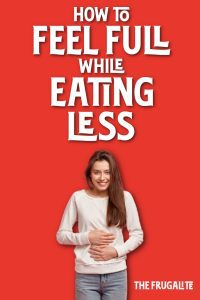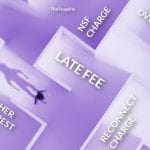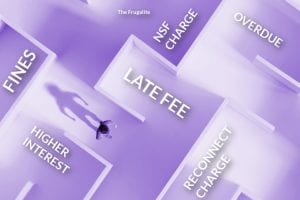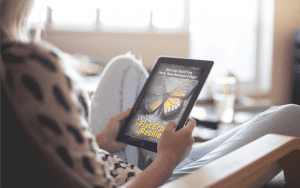(Psst: The FTC wants me to remind you that this website contains affiliate links. That means if you make a purchase from a link you click on, I might receive a small commission. This does not increase the price you’ll pay for that item nor does it decrease the awesomeness of the item. ~ Daisy)
By the author of the FREE online course Growing Self-Sufficiency: The Whole Picture
Indeed, in these trying times, there is substantial evidence that many folks are being forced out of their homes and are also short on food. After reading this article recently, I was moved to share these tips. If you want more details on how to How to Eat When You’re Broke, you need to check out the over 200 pages in Daisy’s new book here, and keep reading to find out how to feel full while eating less!
We need food to survive and fuel our bodies. What I am able to share with you in this article are some simple tips that may help you in situations where you need to go without, whether due to a shortage of food for yourself, or in order to give a portion of your own food to your children.
DISCLAIMER: The author is neither a medical doctor nor a dietician. None of these suggestions are suitable for people who are diabetic or hypoglycaemic. Please consult with your doctor before making any changes to your diet.
What makes us feel full?
First of all, I thought it might be helpful to review some of the ways that our body realizes that it is full and satisfied and doesn’t need any more food.
Nerve receptors in the stomach: There are receptors in the stomach that stretch out as the stomach fills with food or even just water. They send a signal to our brain to stop eating or drinking.
Hormonal Feedback Loop: As food moves out of the stomach into the small intestine, a complex system of hormones are activated. One is related to the most recent meal, and another is related to your body’s perception of its long term energy stores in your fat cells. This second hormone also interacts with dopamine in your brain, creating a feeling of pleasure and satisfaction from your meal.
Why is it important to have a basic idea of these systems? Because your body is always keeping a hormonal “measurement” of your body’s fat stores, it will want to make you feel hungry when it perceives that your fat stores are inadequate. So, these tips I am sharing are not likely to work in a situation where someone has already gone without adequate food for some time and has lost too much weight. Your body will know. These tips are more suited to a short-term situation where you have to cut back a bit but still want to feel full.
Fiber: You have likely heard about how fiber can help us feel full. There are actually two types of fiber that help in two different ways. Soluble fiber “dissolves” into a thick gel that helps us feel more full and this gel also slows digestion. Insoluble fiber is the type that does not dissolve and is not digested. However, its presence in our stomach and intestine also helps us feel full, and we need insoluble fiber for healthy bowel movements.
Research has also now found another mechanism by which soluble fiber helps us feel full. When it is digested, it releases the molecule acetate, which travels through the intestines to the liver and then our brain, telling it that we are full. What is interesting is that there is a cumulative effect here, so more acetate will actually create a feedback loop where the brain begins to create signals to suppress hunger.
Protein: In my own life, I have found protein to be an important part of feeling full. Whenever in the past I tried to eat a breakfast that was low in protein, like just toast and jam, I would be almost instantly hungry. When I add a good protein source to that, with some nut butter, for example, I feel full longer. Research does show that a meal with a relatively higher amount of protein can make someone feel more full than a lower protein choice, even when the total calories are lower.
So, let’s move on to how we can use this new knowledge about our digestive system to feel more full when eating less, shall we?
Selecting foods with low nutrient density
While we certainly want nutrients in our food, making choices of foods with very high nutrient density could leave us feeling hungry. Here are a couple of examples to clarify: 1 cup of raisins has around 500 calories. Whew! One cup of grapes: only around 100 calories. Another example about butter is quite telling: Which would you rather eat to fill you up: one pat of butter or two whole CUPS of raw broccoli? In general, if you want to fill up on foods less dense in nutrients, you’ll be looking at fruits, vegetables, and foods high in fiber, like whole grains. Yep, we’re back to fiber again!
Supplementing fiber before a meal
One way to increase your feeling of fullness is to take a tablespoon of psyllium husks in half a glass of water around 30 minutes before you eat. Make sure to drink a full glass of water at the same time as you take the psyllium to ensure the fiber can make a gel and do what it’s supposed to do. You don’t want it to dry up and block you up!
By doing this 30 minutes before your meal, your stomach will already be fairly full when you go to eat. You should be able to eat less and still feel full. What would the cost of doing this be? You can buy a pound of plain psyllium husks for around $12. If you took one tablespoon a day with your supper, this would last you two and a half months. There is some evidence that psyllium has other health benefits, such as lower blood sugar, cholesterol, and even blood pressure.
If you don’t like the idea of the psyllium husks, another way to do this would be to eat one apple 30 minutes before you eat, along with around half to a full glass of water. Buying discount bags of non-organic apples, the cost of this for two and half months would be around $23, or approximately twice the cost of the psyllium husks.
Eating More slowly, with appreciation and gratitude
In North America, we always seem to be doing something while we eat. I believe that this makes it more difficult to chew our food properly and to truly enjoy it. As I shared in the earlier section, our bodies are made in a certain way, with mechanisms to tell us when we’re full and help us feel satisfied for a longer period of time. If we are eating on the run, in the car, and in a rush, our body is not likely to have the time to tell us we’re full. Slowing down to eat slowly and chew thoroughly can help us to feel satisfied with less. It could even help our digestion!
In the same way, if we are eating while distracted, can we really taste and enjoy our meal? Remember that our brain is involved in our pleasure of eating and our feeling of being full and needing no more food. When I eat, I try to just eat. I don’t do anything else. I find that this helps me appreciate what I have, even if it is a modest meal.
I try to take some time to make it a good meal, even if it is simple. On my foraged greens, I add a splash of balsamic vinegar. I grind some fresh pepper on top. I stop everything and simply eat my food. Sometimes, this allows me to connect with the miracle that what was a dandelion in my lawn is now about to become part of me. Isn’t that incredible? By slowing down and eating without distraction, I hope that I am growing my gratitude and satisfaction with what I have.
We can help our body feel full, even with less
What foods we eat, how much fiber, and even how we eat can all help us feel more full in difficult times. Could you see yourself trying any of the eating tips offered here? Do you have one you can share with us? Are there foods you reach for to make you feel full for longer? Please tell us in the comments section!
About Colette
Colette is passionate about sharing her knowledge of thrifty living and self-sufficiency. She has developed her skills in self-reliance living in the suburbs, the city, and more recently, on her own Half-Acre Homestead. Colette lived five years completely off-grid and without running water in an eight by 24 foot tiny home while designing and building her own 18 by 24-foot eco-cabin. Her website, Half Acre Homestead is attracting followers from around the world who want to become more self-sufficient. Colette invites you to stop by the Homestead and check out all of the great resources including the practical How To Guides, A Tiny Home Resource Center and her organic gardening stories on her blog. She shares her wholistic model (body/mind/spirit) for achieving self-sufficiency in her Free Course, “Growing Self-Sufficiency: The Whole Picture.” Stop by the Homestead today to register free of charge!












7 thoughts on “How to Feel Full When Eating Less”
Interesting thoughts here. I’ve never heard of the psyllium thing before, but it sounds like a great idea. I think I will try it. From what kind of store do you buy the psyllium?
I’ve noticed that you seem to be writing more articles lately. I am glad…for two reasons. First, you always offer useable ideas which are very beneficial. And second, since you aren’t working at the dairy, I’m hoping that this will be a help to you as well.
Blessings to you,
Trish
Hi Trish, Thanks so much. Plain psyllium husks can often be found at Health Food Stores. However, I have found them in a large grocery store that has an organic/health food section. I have used them myself successfully for weight loss in the past. I only took one serving per day, around 20 minutes before eating supper. I was definitely not hungry! I appreciate your kind thoughts and wish you the best.
I’m happy to see another article from you too. These are great thoughts! I especially appreciate the bit about acetate production, I hadn’t known that.
A couple of things. Habit can make us feel hungry even when we are getting enough food, so keeping busy with something around mealtime or snacktime can help with not wanting to eat enough. You might be wanting to save money for meals by not wasting money on snacks, for example. Also, the body can make us feel like we are starving even when we have a major surplus of fat – just ask anyone trying to lose weight.
Drinking water is just a good idea, period, so having a glass before a meal has been shown to improve satiation. I basically wanted to underscore that point. Having a little fat of whatever type will also help slow digestion and make you feel full. Your example of nut butter is fantastic, however the fat in there is doing just as much as the protein to help you feel full, if not more.
As tempting as it is, avoiding sugar can also help you be less hungry. Though it can be good for quick energy it can also cause “crashes” and make you feel hungrier than you were before you started. At times when I can choose between having something sugary or carb-heavy, but I won’t be able to have protein or fat with it, I usually fast instead because I know I’ll just be even hungrier right after.
Hormone regulation is indeed extremely important and I have another one for you, ghrelin. One of its best known functions is making you hungry. It is produced in greater quantities when you have had poor quality sleep, so a cheap way to feel less hungry is to get more sleep! That will also help things like memory retention and wound healing. Managing stress as well as you can also not only helps your mental health but may make your hunger feel less acute.
All that said, this was a neat article and I appreciate you for writing it. 🙂 For anyone reading this article because they don’t have enough to feed themselves or their kids, I wish you the best. The rest of this site has some great tips and I hope you make use of them. IT WILL GET BETTER. Hang in there.
Hi Redbranch, I hope that everyone will read your great comment and kind words of support for those in need. Thank you so much for taking the time to share these valuable ideas. Much appreciated!
Metamucil is made with psyllium husks. It is also orange flavored.
Hi Bill, Yes, that’s exactly right. I recommend the pure psyllium husks because they contain no sugar or other chemicals. If desired, the pure psyllium husks could be mixed into orange juice. Ideally, mixing them in water is better, as there is no added sugar (and calories) before the meal. Thanks so much for making that connection, as I’m not sure I mentioned it in the article and it’s something many would be familiar with. Wishing you the best!
Metamucil also costs a lot more than plain psyllium, but it’s a good thing to remember if you find a really good close out sale or something!